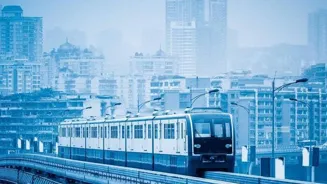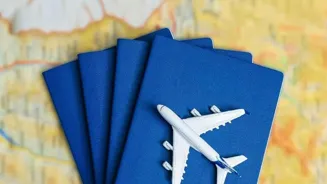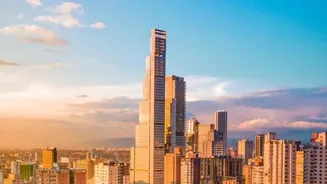Discover 7 Essential Tips to Master Public Transportation in Indian Cities. Enhance your urban journey with ease!
Cities, with their vibrant energy and bustling streets, offer a multitude of opportunities.
However, getting around these urban jungles can often feel like a Herculean task.
Traffic jams, parking woes, and the sheer cost of private vehicles can quickly turn your city explorations into stressful experiences. Fortunately, most Indian cities have robust public transportation systems that, if navigated correctly, can be a boon for commuters and explorers alike.
This article provides seven practical tips to help you navigate public transportation in Indian cities with ease and confidence, ensuring a smoother and more enjoyable urban journey.
Plan Your Route in Advance: Your Travel Compass
In the age of technology, blindly stepping onto a bus or train without prior planning is a recipe for getting lost or delayed. Before you even leave your house, take advantage of the numerous online and offline resources available to chart your course.
Google Maps, with its real-time traffic updates and public transportation schedules, is an invaluable tool. Many cities also have their own dedicated transportation apps that provide specific information about bus routes, train timings, and estimated arrival times.
These apps often include features like route planning and real-time tracking of vehicles, allowing you to monitor your journey's progress.
Familiarize yourself with the different modes of transport available in your city – buses, trains, metros, auto-rickshaws, and ride-sharing services – and understand which ones are most suitable for your destination and budget.
Note down the bus numbers or train lines you need to take, as well as any transfer points along the way. Consider writing them into a small notebook in the event of signal issues.
Having a clear plan will not only save you time and stress but also prevent you from getting lost or making costly mistakes. Planning is especially important during peak hours or on holidays when public transport may be overcrowded or have altered schedules.
Master the Art of Ticketing: Avoid Last-Minute Hassles
Nothing is more frustrating than rushing to catch a bus or train only to find yourself struggling with ticketing. Depending on the city and mode of transport, ticketing systems can vary widely, from traditional paper tickets to smart cards and mobile payment options.
Learn how the ticketing system works for the modes of transport you frequently use. Many cities now offer smart cards that can be recharged and used across different modes of transport, providing a convenient and cashless solution.
Explore mobile ticketing options, which allow you to purchase tickets directly from your smartphone, eliminating the need to stand in queues. This can be a lifesaver, particularly during peak hours.
If you are a regular commuter, consider purchasing a monthly or quarterly pass, which can significantly reduce your travel costs. Remember to validate your ticket or smart card before boarding the bus or train to avoid penalties.
Keep your ticket or smart card safe and readily accessible for inspection by conductors or ticket inspectors. Understanding and mastering the ticketing system will save you time, money, and unnecessary stress.
Avoid ticketless travel at all cost, not just for the sake of following the rules but also to contribute to society.
Embrace Off-Peak Hours: Beat the Rush Hour Crush
Anyone who has traveled on public transport during rush hour knows the feeling of being sardined into a packed bus or train. The sheer density of people can be overwhelming, making your commute uncomfortable and potentially dangerous.

If your schedule allows, try to travel during off-peak hours when the crowds are thinner. Typically, this means avoiding the morning and evening rush hours when people are commuting to and from work or school.
Traveling during off-peak hours not only guarantees you a more comfortable journey but also allows you to enjoy the city at a more relaxed pace. You will have more space to sit or stand, making it easier to read, listen to music, or simply unwind.
Moreover, off-peak fares may be cheaper in some cities, saving you money on your commute. If you have flexibility in your work or meeting timings, consider adjusting your schedule to take advantage of off-peak hours. This simple change can make a world of difference to your daily commute.
Stay Aware of Your Surroundings: Safety First
While public transport is generally safe in most Indian cities, it is essential to be aware of your surroundings and take precautions to protect yourself from theft or harassment. Keep your valuables, such as your phone, wallet, and jewelry, out of sight and close to your body.
Avoid displaying expensive items that may attract unwanted attention. Beware of pickpockets, especially in crowded areas. Be mindful of your belongings and keep your bags securely closed.
If you are traveling at night or in unfamiliar areas, try to travel in well-lit and populated sections of the bus or train. Avoid isolated or dimly lit areas. If you notice anything suspicious or feel uncomfortable, trust your instincts and move to a safer location.
If you are being harassed or witness someone else being harassed, don't hesitate to speak up or seek help from other passengers or transport staff. Stay alert and aware of your surroundings at all times, and don't be afraid to report any suspicious activity to the authorities.
Learn Basic Local Phrases: Break the Language Barrier
In a country as diverse as India, language barriers can be a significant challenge, especially when navigating public transport in unfamiliar cities. Learning a few basic local phrases can go a long way in making your journey smoother and more enjoyable.
Start with greetings like "Namaste" or "Hello," and learn how to ask for directions, inquire about bus or train routes, and confirm ticket prices. Knowing how to say "please," "thank you," and "excuse me" in the local language will also be greatly appreciated by locals.
Learning a few common phrases can also help you communicate more effectively with transport staff and fellow passengers. They will be more willing to assist you if they see that you are making an effort to speak their language. Look up common words.
There are many easy language learning apps, these will also help you to learn basic local phrases. Download it on your mobile phone. Don't be afraid to ask for help and clarify any doubts you may have.
A little effort to learn the local language can significantly improve your experience of navigating public transport in a new city.
Be Patient and Respectful: Contribute to a Positive Commute
Public transport in Indian cities can be chaotic at times, with crowded conditions, delays, and unexpected disruptions. It is important to be patient and respectful towards fellow passengers and transport staff.
Remember that everyone is trying to get to their destination, and getting frustrated or aggressive will only make the situation worse. Be mindful of others and avoid blocking doorways, pushing or shoving, or talking loudly on your phone.
Offer your seat to elderly or disabled passengers.
Avoid littering on the bus or train, and dispose of your waste properly. Follow the instructions of transport staff and be respectful of their authority. Keep in mind that conditions can be tough for transport staff at times.
A positive attitude and small smile on your face can potentially make a big difference to them. By being courteous and respectful, you can contribute to a more pleasant and harmonious commuting environment for everyone.
Embrace the Journey: Discover the City’s Hidden Gems
Finally, try to embrace the journey itself and see public transport as an opportunity to discover the city's hidden gems. Instead of simply focusing on getting from point A to point B, take the time to observe your surroundings and soak in the local atmosphere.
You might stumble upon interesting shops, restaurants, or historical sites that you would not have otherwise noticed. Public transport can also be a great way to meet new people and learn about different cultures.
Strike up a conversation with a fellow passenger, and you might be surprised by what you learn. Pay attention to the city's architecture, street art, and local customs.
Public transportation provides a window into the daily lives of people, and it can provide invaluable insights into the city's unique character. Don't be afraid to step off the beaten path and explore different neighborhoods.
With a little curiosity and an open mind, you can turn your daily commute into an adventure and discover the city.
AI Generated Content. Glance/InMobi shall have no liability for the content










